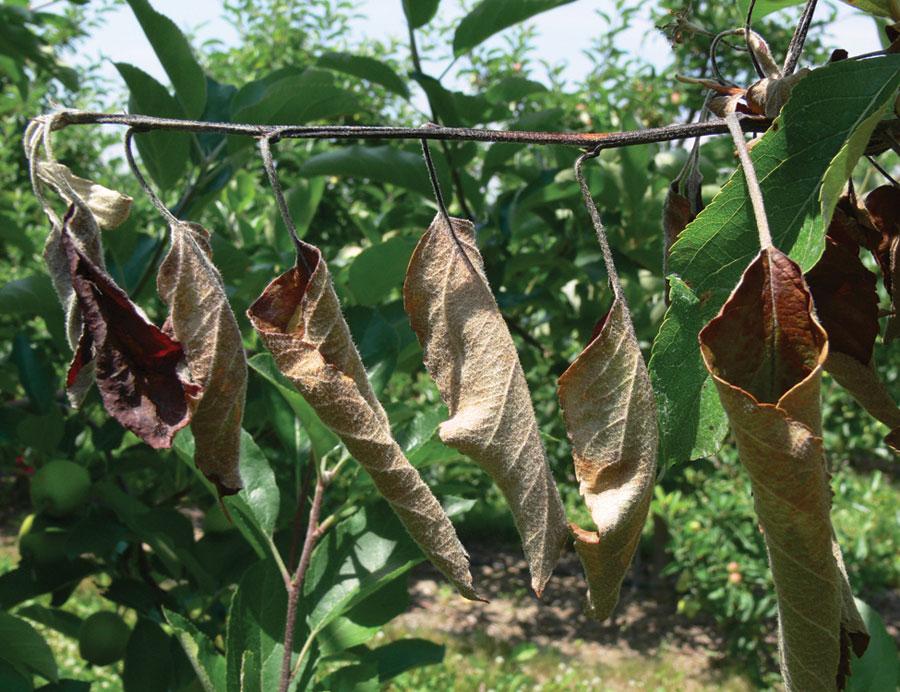

Once established, the disease could readily spread by natural means such as insects and wind into flowers, shoots and growing tips on adjacent trees. Infected apple trees could have been transported to previously pest-free regions such as Gwangju and Yangju of Gyeonggido via the purchase of infected materials, e.g.

The attempts to trace the source of the diseased plants revealed a possible pathway. A delimiting survey and sampling surveys were carried out to gather and analyse data during 2020. The Animal and Plant Quarantine Agency, South Korea, immediately conducted a surveillance study involving 350 orchards to determine the source of the outbreaks, and the extent of its spread and pathway(s). Some Resistant or Tolerant PlantsĪpple - Enterprise, Freedom, Liberty, Prima, Priscilla, etc.Ĭrabapple - Adams, Dolgo, Jewelberry, Liset, etc.In 2020, 744 orchards in South Korea were reported to be infected by fire blight ( Erwinia amylovora (Burrill) Winslow et al.). Re-application following rain may be needed. Application of Kocide should begin at bloom and continue every 7 days during bloom. Applications of Agrimycin need to begin at the start of blooming and continue every 3-4 days during the bloom period. Therefore, in years when warm, humid, wet weather coincides with flowering and leaf emergence, spray plants with a fungicide containing basic copper sulfate (Kocide) or an antibiotic (Agrimycin) to reduce infection. Chemical control is not always effective and needs to be applied preventively. These practices avoid spreading the pathogen.Īvoid heavy nitrogen fertilization, especially in summer, when succulent growth is most susceptible to fireblight infection. Wash and oil shears when you are finished. Dip pruning tools in 70 percent isopropyl alcohol (rubbing alcohol) or 10 percent bleach solution (1 part bleach to 9 parts water solution) between each cut. Disease Managementĭuring spring and summer, prune out infected branches 8 inches below the damage. The bacteria spread rapidly through the plant tissue in warm temperatures (65 degrees F or higher) and humid weather. Insects also help spread the disease to healthy plants. In spring, the bacteria ooze out of the cankers and attract bees and other insects.

The bacterium can survive the winter in sunken cankers on infected branches. Once established in the tree, fireblight quickly invades through the current season's growth into older growth.įireblight can be spread from diseased to healthy plants by rain, wind, and pruning tools. Initially the disease often enters the tree through natural openings, especially flowers and wounds in the spring. Dead leaves and fruit remain on the branches. Branches may be bent, resembling what is commonly referred to as a “shepherd's crook” (Figure 1). Young twigs and branches die from the terminal end and appear burned or deep rust colored. The bark at the base of blighted twigs becomes water soaked, then dark, sunken and dry cracks may develop at the edge of the sunken area. Shephard's crook, a typical symptom of fireblight. The plants affected include Amelanchier (serviceberry), Chaenomeles (flowering quince), Cotoneaster (cotoneaster), Crataegus (hawthorn), Eriobotrya (loquat), Malus (apple and crabapple), Photinia (photinia), Prunus (flowering almond, plum and cherry), Pyracantha (pyracantha), Pyrus (pear), Rosa (rose), and Spirea (spirea).įigure 1. The disease affects plants in the Rosaceae family, which includes trees and shrubs in orchards, nurseries and landscape plantings. In the following paragraphs are some facts and methods to avoid and control the disease. Fire blight attacks blossoms, leaves, shoots, branches, fruits, and roots. Fireblight can be a problem in Georgia and is particularly prevalent in some counties. Mila Pearce, Former IPM Homeowner Specialistįireblight is a destructive, highly infectious and widespread disease caused by the bacterium Erwinia amylovora. Alfredo Martinez, Extension Plant Pathologist


 0 kommentar(er)
0 kommentar(er)
